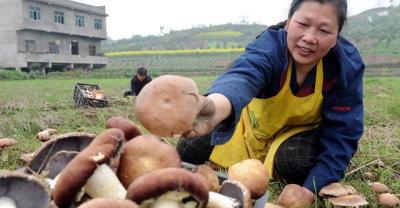Non-pathogenic diseases of edible fungi
2. Non-pathogenic diseases
Inappropriate living conditions and improper cultivation and management measures or genetic variation will cause obstacles to the growth and development and physiological obstacles of edible fungi.
All kinds of abnormal phenomena. This disease is not caused by pathogenic microorganisms and insect pests, so it is also called non-infectious disease. The causes and symptoms are as follows:
(I)
Lentinus edodes, mushrooms, Pleurotus ostreatus can all occur is the phenomenon of overgrowth. Especially after the mushroom is covered with soil, the villi hyphae grow vigorously, and the fine soil surface produces "emergence".
"hyphae", the formation of hyphae overgrown, in serious cases dense agglomeration, forming a bacterial membrane, and delay the emergence of mushrooms, reducing the yield. Pleurotus ostreatus due to improper management, hyphae
In vain growth, a strong bacterial bundle network was formed on the surface of the culture material, but the fruiting body primordium was not formed, and the mushroom was delayed. The mycelial healing stage of Lentinus edodes cultivation materials, if
Due to improper management, a thick white bacterial membrane was formed on the surface of the culture material, which did not change color and could not form a fruiting body.
The excessive growth of mycelium may be caused by improper management, the mushroom room is less ventilated, and the plastic film covered by Pleurotus ostreatus, Lentinus edodes and cultivation materials is not covered for a long time.
Can ventilate, the carbon dioxide concentration is too high; the mushroom material covers the fine soil and the mushroom material block surface humidity is too high, and the Pleurotus ostreatus material layer is dry and so on.
All of them can cause hyphae to grow, which is not conducive to the formation of fruiting bodies.
- Prev

Environmental conditions for the growth of edible fungi
The environmental conditions of edible fungi the growth and development of edible fungi is controlled by internal and external factors. The internal factors are determined by the genetic law of edible fungi.
- Next

Talking about Edible Fungi (2)
The morphological structure of edible fungi we know that edible fungi are large fungi, which are composed of two parts: mycelium and fruiting body. Edible fungi rely on hyphae to absorb from the ingredients.
Related
- Fuxing push coffee new agricultural production and marketing class: lack of small-scale processing plants
- Jujube rice field leisure farm deep ploughing Yilan for five years to create a space for organic food and play
- Nongyu Farm-A trial of organic papaya for brave women with advanced technology
- Four points for attention in the prevention and control of diseases and insect pests of edible fungi
- How to add nutrient solution to Edible Fungi
- Is there any good way to control edible fungus mites?
- Open Inoculation Technology of Edible Fungi
- Is there any clever way to use fertilizer for edible fungus in winter?
- What agents are used to kill the pathogens of edible fungi in the mushroom shed?
- Rapid drying of Edible Fungi

